This article was reviewed by lactation consultant Olivia Hinge on 03/05/24
Breast pumping is a great way to help you have a consistent stock of breast milk ready for when your baby needs it, even when you aren’t able to breastfeed. Once you understand how to store and reheat milk, it will give you a lot more flexibility; helping you plan feeds not only around your baby’s routine, but your own schedule, too.
In this guide, we’ll take you through how to store your milk, how to defrost frozen breast milk, how to reheat stored breast milk, and answer some of the most commonly asked questions around breast milk storage.
Before you store — breast milk hygiene guidelines
To give your freshly expressed milk the best possible chance of staying safe to consume, it’s important to follow some basic hygiene guidelines before you store it:
Wash your hands with soap and warm water before expressing breast milk.
Clean the breast pump equipment, including all tubing and parts, before and after each use with hot soapy water or in a dishwasher if dishwasher safe.
If you are using a manual breast pump (like Elvie Curve), clean it with hot soapy water or in a dishwasher if dishwasher safe after each use.
Use a clean, sterilized container to collect the milk. Glass or hard plastic containers with tight-fitting lids are best.
If you are storing the milk in the refrigerator or freezer, make sure to label the container with the date the milk was expressed.
If you are using a breast pump that is not your own, make sure to sterilize it with boiling water for 5 minutes before using it. Bear in mind that sharing open-system pumps (pumps where milk can enter the tubes and pump mechanism as there’s no barrier) is not advised due to the contamination risk. Wearable pumps are closed systems, meaning there is a barrier protecting the pump mechanism from milk leakage. If you’re using a wearable pump that someone else has also used, sterilize it for 10 minutes first.
Avoid using any plastic containers that have cracks or scratches.
Avoid using any bottle or container with a discolored or cloudy appearance.
How to store breast milk
Once you’ve expressed your milk, you can store it in the refrigerator or freezer in sterilized containers, or special freezer bags made specifically for breast milk. It’s a good idea to leave a 2cm gap at the top of containers or bags to allow for the milk to expand in the freezer — also helping to reduce the risk of messy leaks. It’s also advisable to write the date you expressed on each container to help you keep track of your stock, and you should always use the oldest milk first.
The length of time you can store breast milk depends on your method of storage. In general, the below rules are recommended for freshly-expressed breast milk:
In the fridge: Breast milk can be stored in the back of the fridge (at a temperature of 39° F/4°C or lower) for up to 4 days.
In the freezer: Breast milk can be stored in the freezer (at 0° F/-18°C or lower) for up to 6 months.
At room temperature: Breast milk can be stored at room temperature (77°F/25°C or lower) for up to 4 hours. It's important to use the milk within this time frame to ensure it remains fresh and safe for the baby to drink.
It can be difficult to know how much milk to store at first, especially as you’re getting used to your baby’s feeding habits. However, here at Elvie we find that mums normally pump around 90-120ml per sitting (or more if you’re making the most of letdown, too!). These smaller quantities can be stored easily and thawed quickly — and can also be combined if needed.
It is totally normal for milk to separate when stored in the fridge or whilst it has been frozen, or to be thin with a bluish, yellowish, or even brownish color. However, if your milk has a strong rancid smell or continues to separate even when swirled — whether straight from the fridge or after thawing — it is likely it has gone off and you should not give it to your baby.
Breast milk containers — what to look for
When storing your freshly expressed breast milk, it’s important to use a clean, sterile, and airtight container. While any container that meets these criteria can be used, containers specifically designed for breast milk storage, such as cups, bottles, or bags, may offer additional benefits. Some examples of these features include:
Measurement markings on the side of the container, allowing you to see how much milk you have stored
Leak-proof design to prevent spills
Double-walled insulation to keep milk at the right temperature for longer
BPA and phthalate-free construction, ensuring safety for both you and your baby
Stackable design, meaning less space taken up in the fridge/freezer
Date indicator on the container to keep track of when the milk was expressed
Convenient pouring spout, reducing the likelihood of splashes or spills
Ability to withstand high heat for safe and easy sterilisation in boiling water or steam
Storing breast milk with Elvie pumps
For more information on how to store milk expressed through any of our Elvie pumps, head to the following pages:
Please note: Elvie Curve isnot suitable for storing milk.
How to defrost frozen breast milk
If you’re freezing breast milk after expressing it, it’s important to thaw it fully and safely before giving it to your baby. The NHS website recommends thawing the milk slowly in the refrigerator overnight before you intend to feed. However, in cases where you need to defrost the milk swiftly, there are a couple of options — either hold it under running lukewarm water or swirl it in a jug of lukewarm water.
While the convenience of using a microwave to defrost frozen milk might seem appealing, it is highly recommended to avoid this method. While defrosted breast milk is still good for your baby, microwaving can damage the valuable proteins in the breast milk, reducing the nutrients your baby gets from it, and can pose a burn risk for your baby.
Thawed breast milk can be kept in the refrigerator for up to 24 hours, but it’s very important not to refreeze it.
How to reheat breast milk
If your baby is happy to drink expressed milk cold, it is perfectly safe to give it to them straight from the refrigerator according to NHS guidelines, and it will save you some precious time! However, many babies prefer milk at around body temperature, especially when it comes to bedtime when feeding is as much about soothing and calming them as it is about sustenance.
You can heat breast milk in a jug or basin of warm water. Once the milk has warmed through (this may take around 20 minutes), you may want to gently stir the milk to combine the creamy top and the liquid bottom, as it’s very common for separation to occur during the refrigeration and reheating process. As with thawing, steer clear of the microwave as this can dramatically reduce the nutritional value of your milk. It can also cause “hot spots” which can burn your baby’s mouth.
You are aiming for body temperature when reheating milk, so the best way to test it is to place a few drops on your wrist and see how it feels. If it feels hot on your wrist, it’s definitely too hot for your baby's sensitive tongue and gums, so if that’s the case, you should leave the bottle to cool before starting the feed.
If during feeding your baby is unable to finish the bottle, you can keep this milk for around 1 hour. Discard it after this time, as recommended by the Academy of Breastfeeding Medicine, to avoid bacteria being passed between the baby’s mouth and the bottle.
Breast milk storage FAQs
How long is breast milk good for?
How long breast milk lasts after expression depends on how you store it: at room temperature (up to 77°F/25°C), breast milk is good for up to 4 hours, while it can be stored in the back of a fridge (at around 39°F/4°C) for up to 4 days. Frozen breast milk can be stored at 0°F/-18°C for up to 6 months.
How long can you freeze breast milk?
Frozen breast milk can be stored at a temperature of around 0°F/-18° C for up to 6 months, but it’s best to do so in small quantities so it can be thawed and used quickly. Once your frozen milk has been defrosted, it should not be refrozen or refrigerated.
Can you reheat breast milk?
If your baby prefers to drink milk at body temperature, you can reheat stored breast milk in a jug or basin of warm water — which should take around 20 minutes. You should avoid using a microwave to reheat milk, as this will remove some of the vital nutrients that your baby needs.
How do I know if breast milk has gone bad?
There are a few signs that breast milk has gone bad:
It has a sour or rancid smell
It has changed color
It has lumps or clumps in it
If you notice any of these signs, it's best to discard the milk and not give it to your baby.
How long does breast milk last outside of the refrigerator?
Breast milk can typically be stored at room temperature for up to 4 hours. It’s best to minimize the amount of time the milk is left at room temperature before giving it to your baby. For maximum safety, try to use the milk as soon as possible after taking it out of the fridge.
How long is thawed breast milk good for?
Once your stored breast milk has been thawed, it can remain in the refrigerator for up to 24 hours. It’s important, however, never to refreeze thawed milk.
Can warmed breast milk be refrigerated again?
It’s not recommended to put previously refrigerated or frozen breast milk back in the fridge after it has been warmed or thawed. This is because the process of warming or thawing the milk can cause bacteria to grow, and if the milk is then cooled again, the bacteria can multiply and potentially cause an infection.
How long can warmed breast milk stay out?
As a rule of thumb, once breast milk has been warmed or thawed, it should be used within two hours; if it’s not used within that time frame it’s best to throw it away.
You should never refreeze or refrigerate thawed or warmed milk. It’s best to thaw and warm only the amount of milk that you plan to use and avoid wasting any. If you’ve thawed more than you need and it has not been used within 2 hours, discard it.
Can I put breast milk back in the fridge after baby drinks from it?
No — this is because the process of the baby drinking the milk can introduce bacteria from the baby's mouth and the environment, which may contaminate the remaining milk. Once breast milk has been consumed by the baby, any remaining milk should be discarded.
Does breast milk need to be refrigerated right away?
Breast milk does not need to be refrigerated immediately after it is expressed, but it should be stored in a clean, sealed container and refrigerated as soon as possible to preserve its quality and prevent the growth of bacteria.
As long as the room isn't too hot, you can keep milk at room temperature for up to four hours when expressing at home.
What happens if you leave breast milk out longer than 4 hours?
If freshly expressed breast milk is left out for over 4 hours, bacteria will multiply, and the milk will start to spoil, making it dangerous to consume. If your milk has been left out for 4 hours or more, you should discard it. This is particularly important if the room is warm or if the milk has been exposed to direct sunlight, as this can accelerate the growth of bacteria.
Can I store breast milk in bottle liners or plastic bags?
Only use breast milk storage bags or clean, food-grade containers to store expressed breast milk. Never use disposable bottle liners or plastic bags that are not specifically designed for storing breast milk. Choose containers made of glass or plastic with tight-fitting lids — this will ensure the milk is kept fresh and safe for your baby.
Is there a difference in the smell or appearance of thawed breast milk compared to fresh breast milk?
Yes — this is completely normal. Thawed breast milk may have a slightly different smell, color, or texture than freshly expressed milk, but it is still safe to feed to your baby. If your baby refuses to drink the thawed milk, it may help to reduce the storage time before freezing it again.
Breastfeeding support
For further support and advice on storing your breast milk, never hesitate to reach out to your healthcare visitor or lactation consultant. For more information on breast milk and breastfeeding, take a look at the websites below:
References
NHS UK. Expressing and storing breast milk [Internet]. [cited 2024 Feb 18]. Available from: https://www.nhs.uk/conditions/pregnancy-and-baby/expressing-storing-breast-milk/
Centres for Disease Control and Prevention. Proper Storage and Preparation of Breast Milk [Internet]. [cited 2024 Feb 18]. Available from: https://www.cdc.gov/breastfeeding/recommendations/handling_breastmilk.htm
La Leche League International. Storing Your Milk [Internet]. [cited 2024 Feb 18]. Available from: https://www.llli.org/breastfeeding-info/storingmilk


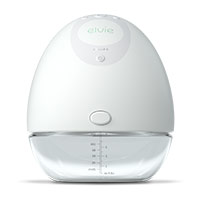
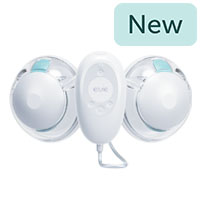
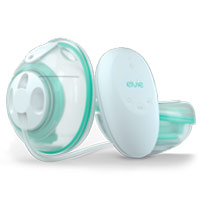
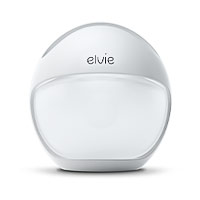
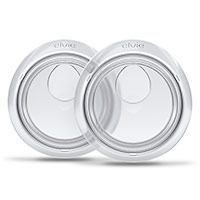
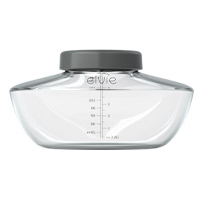
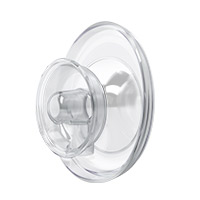

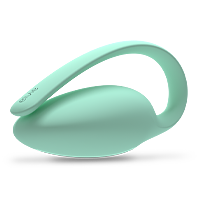
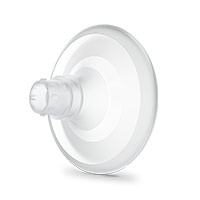
 12 minute read
12 minute read